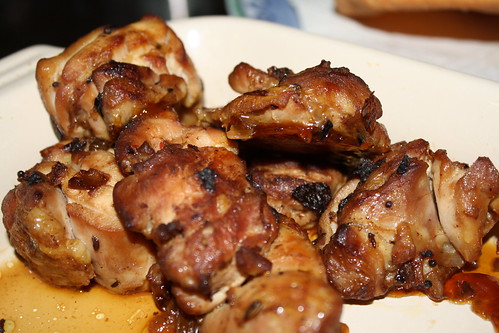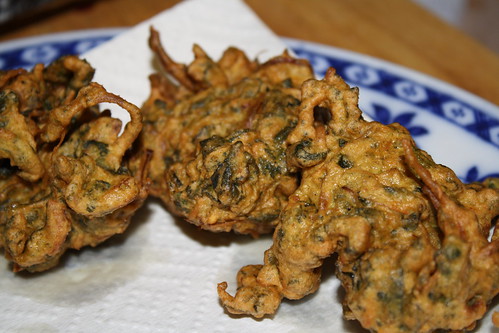There is a restaurant review in the works but today I’m running short of time so here is an excellent chicken recipe that you might find useful over the long break. This is an Indian recipe (Chettinad is a region in Tamil Nadu, in southern India) but it’s a really welcome change to a big saucy curry. It stands on its own perfectly well, but if you are putting together a curry extravaganza, then this is a pleasant contrast to sauce rich dishes. It’s also fab because it doesn’t require 3000 different spices, carefully roasted and ground.
I got this recipe from my mum and I’m pretty sure it did originally come out of a cookbook – I’m sure she’ll let us all know which one!
Begin by taking about 1kg of chicken (I use skinned thigh fillets cut into large cubes) and rub it with about 1 tsp of salt and a generous sprinkle of turmeric. Set aside.
Prepare some salted water – 3 tbsp of water with ¼ tsp of salt. Ensure the salt dissolves in the water.
Heat some peanut (or other flavourless oil) in a wok and ½ tsp of mustard seeds, ½ tsp of fennel seeds, and 5 whole dried hot red chillis. Keep the chillis whole – this does keep the heat of the dish under control. If you have it, also add 1-2 tablespoons of skinned urad dahl. If you don’t have it – don’t bother seeking it out. You could also add some curry leaves.
When the spices are crackling and starting to darken add a finely chopped onion and cook until brown (that’s brown – not burnt – don’t get impatient and whack the heat up!).
Add the chicken to the onion and stir fry, sprinkling on some salted water as you go. Keep adding the water. You want to have used up all the water by the time you finish cooking BUT you must sprinkle the water in, so you don’t end up stewing your meat.
It’s best if you can cook the chicken all in one batch but realistically that might not happen. Just be aware that the longer you have the heat on the chillis the more likely they are to start breaking down and the hotter the finished product will become. If you do want to keep some of this dish mild then reserve some cooked chicken from the first batch.
When the chicken is cooked and the salted water is used up, remove the chicken (and onion and spices, of course) from the wok and serve. You don’t need to serve straight away – this dish is perfect to prepare in advance. Once cooked, put everything into an oven proof dish, cover with tin foil and reheat (with the tin foil on) when you are ready to serve.
Best eaten with pappadums, raita, naan … and don’t worry about having too much – there’s very rarely any left over!



